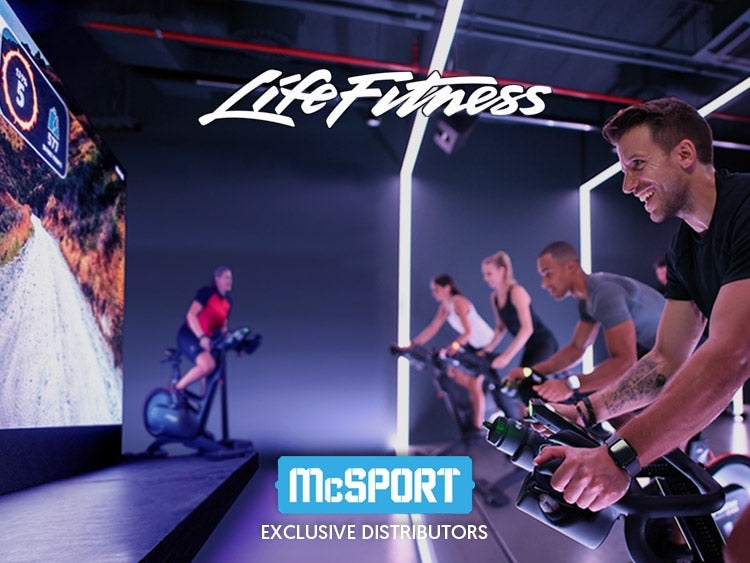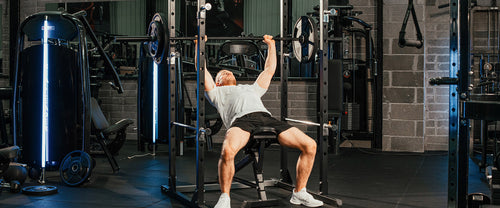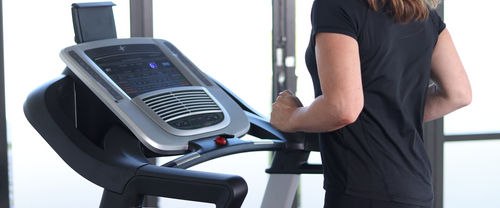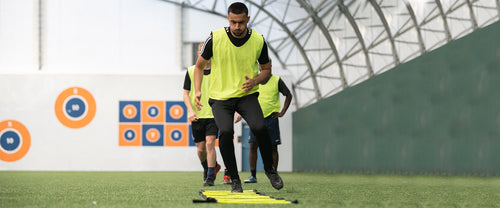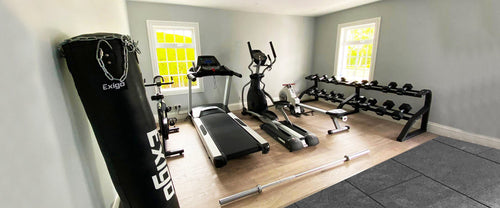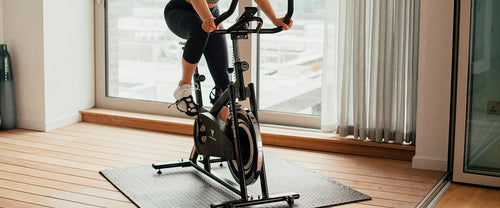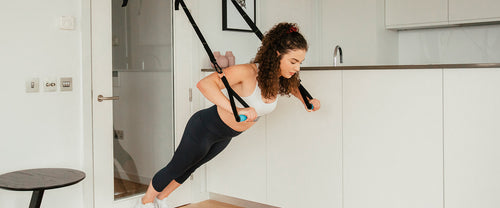As the years go on and more studies show the benefits of a healthy lifestyle filled with daily exercise and clean eating, home gyms have become the norm.
With over 40 years of experience in the fitness industry, McSport has designed and installed some of the finest gyms in the country. From commercial gyms to the small three-piece gym in the spare room, we’ve done it all! In that time, we have picked up a few tips and lessons on gym design and installation. We want you to have the best experience in creating a gym, so we’ve put together this list of 8 lesser-known tips to help you on your way. Before we launch into the tips, though, there are two questions you'll need to ask yourself first:
What are my goals?
Everyone has different goals when training; you may be training for a marathon or want to increase your strength, or you may even want to just stay in shape and get your steps in; whatever it may be, you need to have clear goals in your mind before buying a home gym so that you can buy the correct fitness equipment.
What exercise do I enjoy?

We focus so much of our time on what we should do instead of what we enjoy doing. You want to increase your strength but don’t want to run? Then a kettlebell and squatting rack will do more for you than a rowing machine or treadmill. Whatever fitness equipment you want to add to your home, be sure that you will enjoy it and use it regularly.
Feel like you’ve answered the questions as best you can? Great! Let's dive right into the first tip!
1. Budget
It may seem obvious, but you need to make out a budget before you start to buy fitness equipment and have precise amounts you can spend on each piece. You may want to focus on your strength training; in that case, a lot of your budget will go towards kettlebells, dumbbells, and barbells. If it is boxing you are looking for, then protective gear and punch bags will be a focal point of your budget.
Having a home gym doesn’t have to be expensive; however, you must be aware of your spending. Sure, you can spend €250 on a barbell, but then you may not have enough for the rack you want. The decision is yours on what you want to spend your money on but be sure to make a budget to ensure that you finish the project without running out of money.
2. Location

As our friends, Kirstie and Phil like to say: Location, location, location! Finding a suitable space for your home gym is half the battle. You may have an empty office that you want to convert, or maybe it’s the conservatory you don't use, but it has excellent lighting. If you have extra space in your house, great!
If not, having a treadmill in your garage or shed may be a good alternative; just be sure that it's appropriately insulated, so the Irish winter doesn't affect your equipment. A garage or shed is excellent for your steel kettlebells or your boxing bag as well. We would recommend the correct flooring, so you don’t do accidental damage, though!
3. Lighting

While we know the best source of light to have in your home gym is the sun, living in Ireland, you know that waiting for the sun to come out would be its very own exercise in patience! Studies have shown that natural lighting can make you feel more alert and energised throughout your workout. Even though the sun coming out isn't reliable, it is beneficial to have your home gym somewhere with natural light that can filter in. It will go a long way in improving your mood and ensuring you have a good workout.
If the spot in your house doesn’t get much sun or it’s a dull and cloudy day, upgrading the lights in your gym will be necessary. Ever get the feeling that the lights are very bright in a commercial gym? That’s done to replicate natural lighting effects from the sun — unlike the lights you have in your home, getting bulbs that are between 2200 K and 6500 K in Kelvin range will give you the same energising result as natural lighting.
Investing in a light dimmer is good when a high energy workout is not what you are looking for. You may want to do some yoga or Pilates on your rest day, for instance — in that case, having a light dimmer will help. It allows you to set the intensity to your liking and depending on your mood.
*Top Tip* Be sure you place bulbs evenly around the gym to keep the whole room well-lit and avoid shadows. It will make the space more welcoming when you are working out.
4. Protective flooring

When setting up a home gym, it's crucial not to overlook the importance of protective flooring. Neglecting the right gym flooring can result in unsightly scuffs and scratches on your floors. Moreover, it poses a risk to your fitness equipment and safety.
Considering that you're converting a room in your house into a gym, chances are the existing flooring is made of wood, tile, or carpeting. Unfortunately, none of these options are suitable for fitness equipment.To address these concerns, investing in appropriate gym floor mats is essential. Foam interlocking mats or rubber floor tiles are excellent choices for home gym flooring. These types of protective flooring provide the necessary traction, shock absorption, and stability required for safe and effective workouts. Rubber gym flooring, in particular, offers exceptional durability and resilience, capable of withstanding heavy use and impact.
By ensuring your gym floor fit includes high quality protective flooring, you not only safeguard your investment in fitness equipment but also create a safe environment for your workouts at home.
When you are choosing the floor, there are a few factors to consider.
What intensity is your workout?
Using a treadmill, a skipping rope, or heavy equipment, you will need durable flooring that offers support and is shock-absorbing. Rubber flooring is the best for this as it is highly resilient and provides a good grip— meaning there’s little chance you will fall when working out. The elasticity of the rubber means if equipment drops onto it, instead of damaging your floors, it will simply bounce.
How clean is rubber flooring?
Many people forget to ask this question when putting together a home gym. You will want flooring that doesn’t hold odour and is easy to clean. McSport only uses 95% recycled rubber crumb from truck tires and 5% new EPDM, which minimises odour and hides dirt and dust—meaning your gym will have an easy to clean floor that odour doesn't stick to.
Does it match the aesthetic of your home gym?
It may not seem like a big deal, but you want your gym to fit in with the rest of your home. If you have a bright open house, then a dark gym may not be what you are looking for. Our flooring comes in various colours, with a flecked option that is always a best seller for home gyms!
Be sure you invest in the right flooring for your home gym and have a section for your budget put aside for them. We have a wide range of protective flooring for you to choose from at McSport.
5. Climate control
If you’re going into your home gym, you want to work up a sweat. Having an air conditioning system in your gym will help control the air so that you don’t end up overheating quickly. As we are in Ireland and get around two months of warm weather a year, buying a fan may do the trick for keeping cool instead of an air conditioning system. However, make sure you get the right temperature! Having the gym too cold can be just as bad as having it too warm. You want to strike the right balance, so you are comfortable. Between 20 and 22 degree Celsius is what you’re aiming for.
6. Space

The space you need depends on what type of gym you are looking for. Is it a gym that is solely going to be for strength training? Are you looking at upping your cardio? Or are you training for a specific sport? It may be a combination of all of these. This is where the first question we asked comes in — it all comes down to what your goals are.
If it is a weightlifting setup, you will most likely have a barbell, weight plates, power rack, and a utility bench. For this type of workout, the equipment is relatively compact. A lot of our weightlifting equipment comes with a storage section to keep it as compact as possible.
The widest product in this setup is the barbell. The most popular one sold at McSport is the 7’ Olympic Bar. If this is the size you are going for, you will need a bit of room on either side of the bar.
The longest item is the bench. The length of the bench comes in at 1286 mm, not including your legs that will stick out. You will have to give a bit extra room so that your knees aren't hitting any walls or other equipment. If you aim to go for an 8" round, then you will have plenty of room.
If you are focussing on cardio, for example, you will need a lot more space. Cardio equipment ranges from exercise bikes and rowing machines to treadmills and cross-trainers. All have different dimensions, but the treadmill or cross-trainer are the ones that will take up most of the room in your home gym. Be sure to check the sizes of each, but you will need a much larger space if you are going for a cardio piece.
7. Mirrors

When you go to a commercial gym, you see mirrors everywhere, often with benches and exercise mats in front of them. While they are great for taking the sneaky gym selfie, mirrors also play a vital role in your workout. Depending on the exercise, it is essential to see what you are doing. If you are doing yoga or weights, having the correct position is vital. Having a wall for mirrors will minimise the risk of injury as you are more aware of your posture and positioning.
8. Buying equipment that you don’t need/ won’t use
It’s easy to get wrapped up in the excitement of kitting out a home gym with all the latest fitness equipment, but remember this gym is for your private use; if you have no interest in cycling, then getting an exercise bike may not be the wise choice for you. If you feel overwhelmed with the options you have, start with the basics, and go from there. There is no need to try making it a state-of-the-art gym straight away.
Want to know how to get a great home gym on a small budget? Be sure to check out Everything you need to know about creating a home gym on a budget!


